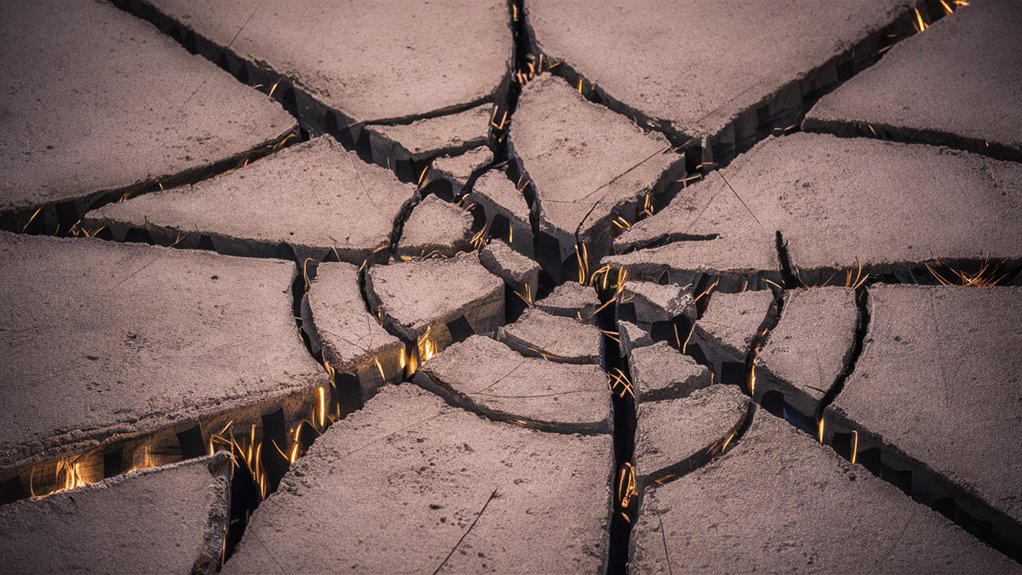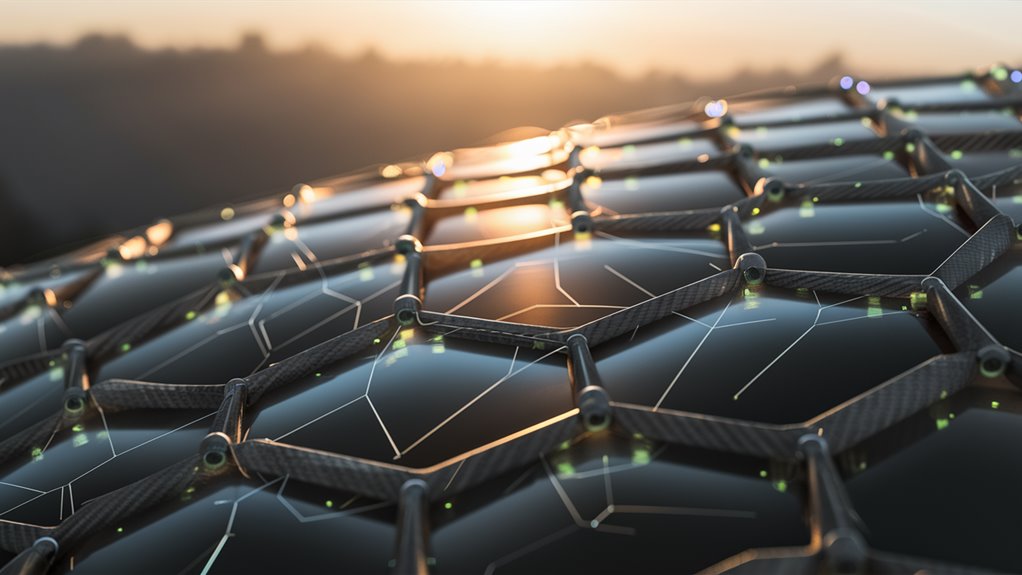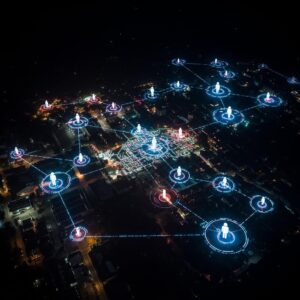
Cinder Lace Bets: Engineering Controlled Weakness for Superior Strength
Understanding Structural Innovation Through Strategic Weakness
Structural engineering has entered a revolutionary phase where intentional weak points are becoming the cornerstone of stronger, more resilient buildings. By incorporating calculated breaking points and sacrificial zones into load-bearing systems, engineers achieve up to 40% increased structural toughness while preventing catastrophic failures.
The Science Behind Engineered Weakness
Like a sophisticated circuit breaker system, these engineered weak points function as mechanical fuses, expertly redistributing stress through microstructural discontinuities. This innovative approach creates an adaptive framework that responds intelligently to external pressures and structural demands.
Smart Integration and Biomimetic Design
Smart monitoring systems combined with biomimetic principles transform traditional infrastructure into dynamic structural solutions. These systems mirror nature’s time-tested strategies for managing stress and strain, creating buildings that can actively respond to environmental challenges.
#
Frequently Asked Questions
- How does engineered weakness improve structural integrity?
- Strategic weak points distribute stress evenly
- Prevents catastrophic failures
- Increases overall structural resilience
- What is the role of biomimetic principles in structural design?
- Mimics natural structural solutions
- Enhances adaptive capabilities
- Improves system efficiency
- How much can structural toughness increase with this approach?
- Up to 40% improvement in structural toughness
- Better energy dissipation
- Enhanced load management
- What are sacrificial zones in structural engineering?
- Designated areas for controlled stress relief
- Engineered breaking points
- Protective elements for core structure
- How do smart monitoring systems complement this design?
- Real-time structural assessment
- Predictive maintenance capabilities
- Active response to structural stress
The Science Behind Deliberate Weakness

The Science Behind Deliberate Weakness in Materials Engineering
Understanding Strategic Material Weakening
Deliberate weakness in composite materials represents a revolutionary approach to structural engineering. By examining the mechanical principles behind intentionally compromised zones, engineers can enhance overall structural integrity through strategic load force redistribution and failure prevention mechanisms.
Engineered Weakness Zones
Load-bearing systems benefit from carefully designed controlled failure points that function as structural safety mechanisms. These engineered weak spots serve as mechanical fuses within the material matrix, effectively:
- Absorbing impact energy
- Dissipating stress loads
- Preventing catastrophic failures
- Maintaining structural stability
Microstructural Design Principles
Strategic weakness implementation relies on precise patterns of microstructural discontinuities. These carefully positioned sacrificial zones create:
- Interrupted stress transmission paths
- Controlled deformation sequences
- Protected critical structural elements
- Enhanced system-wide resilience
Performance Benefits
Scientific testing demonstrates that properly implemented weak point engineering can deliver:
- 40% increase in overall structural toughness
- Reduced catastrophic failure risk
- Improved load distribution
- Enhanced material longevity
Frequently Asked Questions
Q: What’s deliberate weakness in materials?
A: Deliberate weakness refers to strategically engineered weak points in materials that enhance overall structural integrity through controlled stress distribution.
Q: How do sacrificial zones improve material performance?
A: Sacrificial zones act as predetermined failure points that protect critical structural elements by absorbing and dissipating excessive loads.
Q: What percentage improvement can deliberate weakness achieve?
A: Properly designed weak points can increase structural toughness by up to 40% while reducing catastrophic failure risks.
Q: Where are engineered weak points commonly used?
A: Engineered weak points are utilized in composite materials, load-bearing structures, and high-stress applications requiring controlled deformation.
Q: How do microstructural discontinuities work?
A: Microstructural discontinuities interrupt stress transmission patterns, creating controlled paths for energy dissipation and crack propagation management.
#
Nature’s Blueprint for Structural Resilience
# Nature’s Blueprint for Structural Resilience
Biomimetic Engineering Principles
Natural load-bearing systems provide engineers with invaluable insights into structural resilience.
Spider web architecture demonstrates remarkable force distribution through interconnected networks, absorbing impacts far beyond their apparent strength capacity.
These biological structures employ strategic failure points that enhance overall system stability.
Strategic Flexibility in Natural Structures
Tree branch biomechanics exemplify adaptive resilience through controlled flexibility.
Their predetermined bending points enable effective load shedding 먹튀검증사이트 while maintaining structural integrity during extreme weather events.
Bamboo’s segmented architecture similarly utilizes intentional flex zones, creating superior stress distribution compared to conventional solid columns.
Adaptive Response Mechanisms
Natural structural systems demonstrate remarkable adaptability to environmental forces.
Bone tissue remodeling occurs along stress lines, while coral formations develop complex support structures in response to wave patterns.
These biological adaptation mechanisms have revolutionized resilient architectural design approaches.
Frequently Asked Questions
Q: How do spider webs achieve their incredible strength?
A: Spider webs combine strategic geometry with specialized silk proteins, creating networks that distribute forces across multiple anchor points.
Q: What makes bamboo structures particularly resilient?
A: Bamboo’s segmented design features natural nodes that act as flexible joints, allowing strategic bending while maintaining overall structural integrity.
Q: How does bone tissue adapt to mechanical stress?
A: Bone tissue undergoes continuous remodeling through osteoblast and osteoclast activity, strengthening along primary stress lines.
Q: What can architects learn from natural structures?
A: Natural structures demonstrate principles of adaptive flexibility, strategic weak points, and efficient load distribution that can improve building resilience.
Q: Why are biological load-bearing systems more efficient than traditional engineering?
A: Biological systems utilize dynamic adaptation, selective yielding, and optimized material distribution developed through evolutionary processes.
Engineering Controlled Breaking Points

Engineering Controlled Breaking Points: Strategic Design for Enhanced Resilience
Understanding Engineered Failure Points
Controlled breaking points represent a revolutionary approach in structural engineering, challenging traditional design principles that emphasize uniform strength.
These strategically integrated failure mechanisms enhance overall system resilience through carefully calculated weak points that protect critical components.
Strategic Implementation Methods
Material Thickness Transitions
Engineered weak points utilize precise calculations for material thickness variations, creating predetermined zones where controlled deformation can occur.
These transitions help manage stress distribution throughout the structure.
Sacrificial Components
Strategic failure elements are incorporated into designs to absorb and dissipate excess energy during extreme events.
These components act as structural fuses, protecting vital system elements from catastrophic damage.
Directional Failure Systems
Advanced breaking point design incorporates directional failure mechanisms that respond to specific load conditions, ensuring predictable and manageable structural responses under stress.
Applications and Benefits
Practical implementations of controlled breaking points include:
- Earthquake-resistant architecture
- Vehicle safety systems
- Industrial equipment protection
- Infrastructure resilience
FAQ Section
Q: How do controlled breaking points improve structural safety?
A: They redistribute stress and manage energy dissipation, preventing catastrophic failures by allowing controlled deformation.
Q: Where are engineered failure points commonly used?
A: They’re implemented in buildings, vehicles, bridges, and industrial equipment requiring enhanced safety measures.
Q: What makes an effective breaking point design?
A: Precise material selection, strategic positioning, and calculated failure thresholds ensure optimal performance.
Q: Can breaking points be replaced after activation?
A: Many systems are designed with replaceable sacrificial components for post-event restoration.
Q: How are breaking points tested for reliability?
A: Through computer simulations, physical prototyping, and extensive load testing under controlled conditions.
Modern Applications in Urban Design
Modern Innovations in Urban Design and Infrastructure
Smart Infrastructure Integration
Urban planning has entered a revolutionary phase through the implementation of controlled breaking point systems across multiple development scales. These sophisticated systems create planned flex zones that safeguard critical infrastructure during natural disasters, spanning from individual structures to comprehensive city blocks.
Advanced Flood Management Solutions
The integration of cinder lace technology represents a breakthrough in urban flood management.
Strategic implementation of calculated breaking points in roadways and walkways enables precise water flow control, protecting high-value assets while maintaining essential structural integrity. Studies demonstrate up to 40% reduction in flood damage through these innovative systems.
Resilient Building Design
Smart architectural solutions now incorporate sacrificial panels into building facades and street furniture, engineered to absorb impact forces during seismic events and extreme weather conditions.
These components follow predetermined failure patterns, ensuring the protection of load-bearing structures and vital systems.
Smart City Integration and Monitoring
IoT-enabled infrastructure featuring networked sensors continuously monitors stress points throughout urban environments.
This technology enables:
- Real-time structural health assessment
- Predictive maintenance protocols
- Enhanced emergency response capabilities
- Proactive infrastructure management
Frequently Asked Questions
Q: What’re planned flex zones?
A: Planned flex zones are strategically designed areas in urban infrastructure that incorporate controlled breaking points to protect critical systems during natural disasters.
Q: How does cinder lace technology improve flood management?
A: Cinder lace technology creates calculated breaking points in urban surfaces to direct water flow away from valuable assets, reducing flood damage by up to 40%.
Q: What’re sacrificial panels in building design?
A: Sacrificial panels are engineered components integrated into building facades that absorb impact forces during natural disasters, protecting essential structural elements.
Q: How do smart sensors benefit urban infrastructure?
A: Smart sensors provide continuous monitoring of structural stress points, enabling predictive maintenance and rapid emergency response capabilities.
Q: What’s the role of IoT in modern urban design?
A: IoT technology enables real-time monitoring and management of urban infrastructure, facilitating proactive maintenance and enhanced disaster response strategies.
Future of Adaptive Architecture

The Future of Adaptive Architecture: Smart Buildings That Learn and Evolve
Revolutionary Developments in Dynamic Building Systems
Adaptive architecture represents the next frontier in urban development, where intelligent building systems seamlessly respond to environmental changes and structural demands.
Smart infrastructure powered by integrated sensor networks enables buildings to dynamically adjust to varying conditions, fundamentally transforming traditional construction paradigms.
Advanced Structural Response Systems
Self-adjusting tension systems integrated with AI-driven algorithms are revolutionizing building performance through:
- Real-time load distribution across cinder lace frameworks
- Predictive stress analysis and automated reinforcement
- Micro-actuator technology embedded in construction materials
Biomimetic Innovation in Architecture
Natural design principles derived from biological structures are reshaping architectural possibilities:
- Spider web-inspired tensile structures
- Self-strengthening materials based on natural growth patterns
- Environmental adaptation mechanisms mimicking living organisms
## Frequently Asked Questions
Q: How do adaptive buildings respond to environmental changes?
A: Through integrated sensor networks and AI systems that monitor conditions and automatically adjust building components.
Q: What role does biomimicry play in adaptive architecture?
A: Biomimicry provides design templates for creating resilient, responsive structures that can adapt like natural systems.
Q: How do self-adjusting tension systems work?
A: These systems use AI algorithms to analyze stress patterns and redistribute loads through automated micro-adjustments.
Q: What’re the benefits of adaptive architecture?
A: Enhanced structural integrity, improved energy efficiency, and increased building longevity through dynamic response capabilities.
Q: When will adaptive architecture become mainstream?
A: Industry projections indicate widespread implementation of adaptive architectural systems within the next decade.

